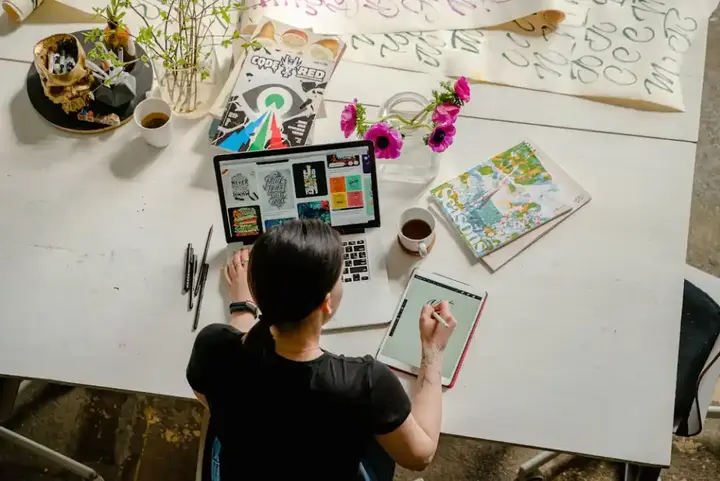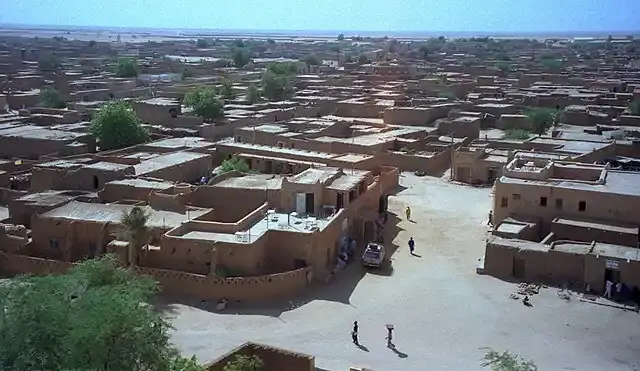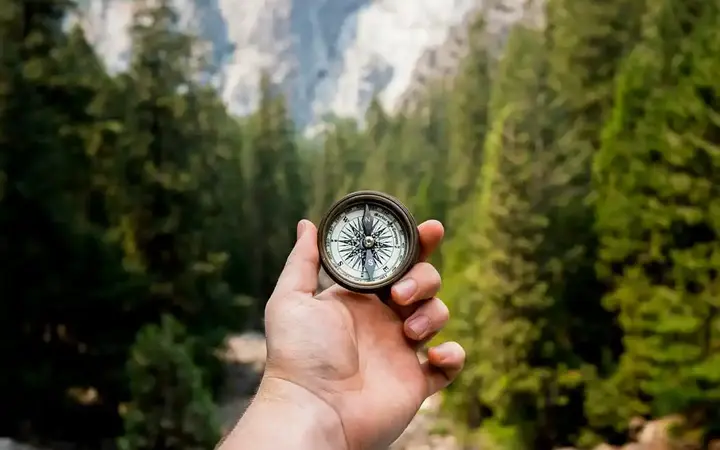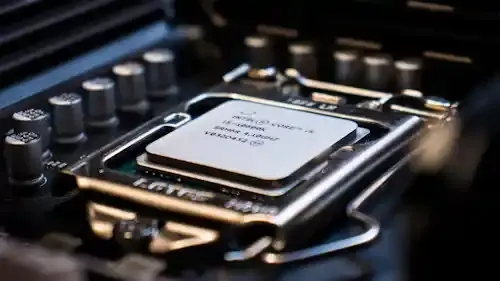The most important job market skills - how to become a graphic designer?
Graphic design is a highly demanded creative field, where designers contribute to communicating messages and promoting ideas through images and drawings. Graphic Design will not be one of the areas that artificial intelligence will completely dominate, as creativity is one of its main components, and the human mind remains unlimited in this regard.
Show key points
- Graphic design is a creative discipline focused on visually communicating messages through images, text, and graphics.
- Despite advances in artificial intelligence, graphic design remains a human-centered profession due to its reliance on creativity and originality.
- The field spans various domains, including marketing, web, print, and multimedia design, offering numerous career paths.
- ADVERTISEMENT
- Successful graphic designers require a mix of soft skills like creativity and communication, along with technical proficiency in industry-standard software.
- To enter the profession, one should learn design principles, master relevant software, and enhance drawing skills through continuous practice.
- Building a diverse and high-quality portfolio is essential to showcase your abilities and attract potential clients or employers.
- Starting a career in graphic design can involve volunteering, freelancing, and using professional platforms to network and market your work.
What is the design of Graphic (Graphic Design)?

It is the art of visual communication using images, text, and graphics, to create creative messages that attract the attention of the public. It is used in wide areas such as:
Marketing and advertising: design of logos, posters, packaging, and advertising.
Web Design: Design website graphics, mobile applications, and user interfaces.
Recommend
Print Design: Design of magazines, books, newspapers, and pamphlets.
Multimedia Design: Design animations, videos, and presentations.
Is designing Graphic a profession right for you?

Before embarking on the design industry journey, make sure you have the following skills and qualities:
Creativity: The ability to come up with new and attractive ideas.
Problem Solving Skills: Ability to analyze customer needs and provide effective design solutions.
Communication skills: the ability to explain your ideas to customers and understand their ideas and what they want specifically in terms of the idea, and what they represent to them, and of course it is important to develop the ability to cooperate with others. A graphic designer usually works in a team of several people on a project, such as an e-marketer and a content writer.
Accuracy and patience: the ability to pay attention to detail and work with high precision.
Technical skills: Mastering design programs, the most famous of which are Adobe Photoshop, Illustrator and InDesign. It is important to be up to date with the latest software and technologies.
Passion for visual arts: love of drawing, photography and design.
Keep up with the latest trends in design.
Master operating systems such as Windows or macOS.
Use the Internet and search for information.
File management and organization skills.
To reach the professionalism of this field, here are some basic steps:
1. Learn the basics of design:
Basic principles: composition, balance, contrast, structure, color psychology, color theory. These basics can be learned during your general learning journey, as they are many, dense and have several aspects. It is important to focus on simple specific principles at the outset.
Design software: Mastering programs like Adobe Photoshop, Illustrator and InDesign is essential for creating professional designs. It is the most famous program through which Graphic are produced. Also we recommend photo editing software like GIMP and Canva. Vector graphics creation programs such as Inkscape.
Drawing skills: Drawing skills improve your creativity and help you express your ideas clearly. If you possess this skill you will become truly outstanding in this field.
Important note: Learn and practice, and as we always say, be simple in the beginning and then deepen with specific steps.
2. Acquisition of specialization skills:
Select your area of interest: Graphic design areas vary, such as website graphics design, visual identity design, print design, UX/UI design, and animation design.
Gain additional skills (if possible): such as web programming, video editing, or digital marketing, complement your skills and expand your business opportunities. Or at least you have to know the basics of it, because the nature of these areas is the most intertwined with your business.
3. Building a strong portfolio:
Collect your best designs: from your personal, study or volunteer projects.
Diversify your portfolio: Demonstrate the diversity of your skills and experience in various fields of design.
Take care of the quality of the display: Make sure your designs are presented accurately and clearly on a suitable online platform.
Showcase your gallery online through sites like Behance and Dribble.
4. How to get started in the field of Graphic design?
If you don't have the experience yet, you should:
Volunteer to design projects for foundations or charities.
Self-employment on small projects to gain experience.
Build a network of relationships with potential customers.
5. How to look for a job in Graphic Design?
Find jobs: Use specialized job sites like LinkedIn and Indeed. You need to create a professional profile on these sites, and keep it up to date.
Connect with companies: Connect directly with companies that interest you. Follow them on their websites or social media channels, as jobs are often posted there.
Start freelancing: Offer your services as a freelance designer on platforms like Upwork, Khamsat, and a freelance site.
Marketing for yourself:
Create a website or profile on the Behance platform:
Showcase your business and style.
Build your personal brand.
Communicate with other Graphic designers:
Attend design events and conferences.
Join online design groups. It is okay to present the works there for an exchange of views and useful discussion. You will then be able to share experiences and learn from others.
![]()
Tigris and Euphrates: Lifelines in Mesopotamia
The Tigris and Euphrates rivers, known as the cradle of civilization, have shaped ancient Mesopotamian life and still power agriculture, trade, and electricity today. Flowing through Turkey, Syria, and Iraq, their waters remain vital but increasingly contested, urging regional cooperation for sustainable and fair resource sharing. more- ADVERTISEMENT
![]()
Agadez Historic Centre, a fascinating African heritage site in Niger
Agadez, known as the "Gateway to the Desert," stuns visitors with its towering 27-meter clay minaret—the tallest in the world—and its rich blend of Tuareg culture, desert architecture, and caravan trade history. Its historic center, a UNESCO World Heritage Site, showcases enduring traditions and earthen beauty. more- ADVERTISEMENT
![]()
You don't lack purpose, you lack focus
You Are Not Lacking Purpose, You Are Lacking Focus more- ADVERTISEMENT
![]()
The Power of Nature: Learn about the forces behind a living volcano
Living volcanoes are powerful natural wonders—windows into Earth’s fiery depths. They dazzle with beauty, yet threaten with eruptions. From shaping landscapes to offering geothermal energy, they reveal nature’s immense force. By studying their behavior, we can better predict their eruptions and harness their energy for a safer, sustainable future. more- ADVERTISEMENT
![]()
The historic citadel of Aleppo ... One of the largest and oldest castles in the world
Aleppo Citadel, one of the world’s oldest castles, stands proudly in Syria’s ancient city. Once a temple and fortress, it saw civilizations from Greeks to Ottomans. Its restored Mamluk throne hall, with marble and basalt details, remains a key highlight, offering insight into the citadel’s rich and layered history. more- ADVERTISEMENT
![]()
How a failed experiment led to Einstein's first big revolution
The Michaelson-Morley experiment tried to detect the mysterious ether believed to carry light—but found nothing. This surprising result helped spark Einstein’s radical idea: light doesn’t need a medium, and its speed is always constant. That bold insight laid the foundation for the revolutionary theory of special relativity. more- ADVERTISEMENT
![]()
Career path in the age of technology: strategies for choosing the right specialty
Technology is reshaping careers, making it vital to align personal passion with future trends. Choosing the right major now demands strategic planning, continuous learning, and adapting to rapid changes. Fields like AI, cybersecurity, and data science offer great promise for those ready to embrace innovation and flexibility. more- ADVERTISEMENT
![]()
The art of being kind to your boss
The Gentle Art of Managing Your Manager more- ADVERTISEMENT
![]()
75% of the global diet is produced by just 12 plants and 5 different animals
75% of the global diet is produced by just 12 plants and 5 different animals more- ADVERTISEMENT
![]()
The best economical graphics cards for gaming and content creation - available in the Arab world
Looking for strong gaming and content creation performance on a budget? The NVIDIA GeForce GTX 1660 Super and RTX 3050 stand out for 1080p, while the AMD RX 6700 XT and NVIDIA RTX 3060 Ti shine at 1440p. Great value options packed with smooth performance and essential features like ray tracing. more- ADVERTISEMENT





















